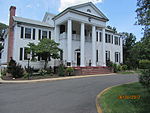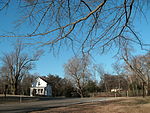Fort Hunt, Virginia

Fort Hunt is a census-designated place (CDP) in Fairfax County, Virginia, United States. The area is named after Fort Hunt, which was built on the bank of the Potomac River in 1897 to defend Washington, D.C. from naval attack and is now a public park. The area is also notable for its high population of senior citizens and for being one of the first suburbs in wealthy Fairfax County. The population was 16,045 at the 2010 census.Fort Hunt encompasses the 22308 ZIP code of Alexandria, composed of much of the most affluent section of southeast Fairfax County, close to the George Washington Memorial Parkway and Potomac River, including the neighborhoods of Riverside Gardens, Tauxemont, Herbert Springs, Waynewood, Plymouth Haven, Potomac Valley – River Bend, Collingwood, Stratford Landing, Stratford on the Potomac, Hollin Hall, Wellington, Arcturus and (in ZIP code 22307) Villamay and Marlan Forest. As of the 2010 census, Fort Hunt also includes the neighborhood of Hollindale in ZIP code 22306 and much of Hollin Hills in 22307. Prominent Fort Hunt residents include U.S. Senator Tim Johnson and former House Speaker Bob Livingston.
Excerpt from the Wikipedia article Fort Hunt, Virginia (License: CC BY-SA 3.0, Authors, Images).Fort Hunt, Virginia
Glen Cove Court,
Geographical coordinates (GPS) Address Nearby Places Show on map
Geographical coordinates (GPS)
| Latitude | Longitude |
|---|---|
| N 38.732777777778 ° | E -77.058055555556 ° |
Address
Glen Cove Court
22308
Virginia, United States
Open on Google Maps











